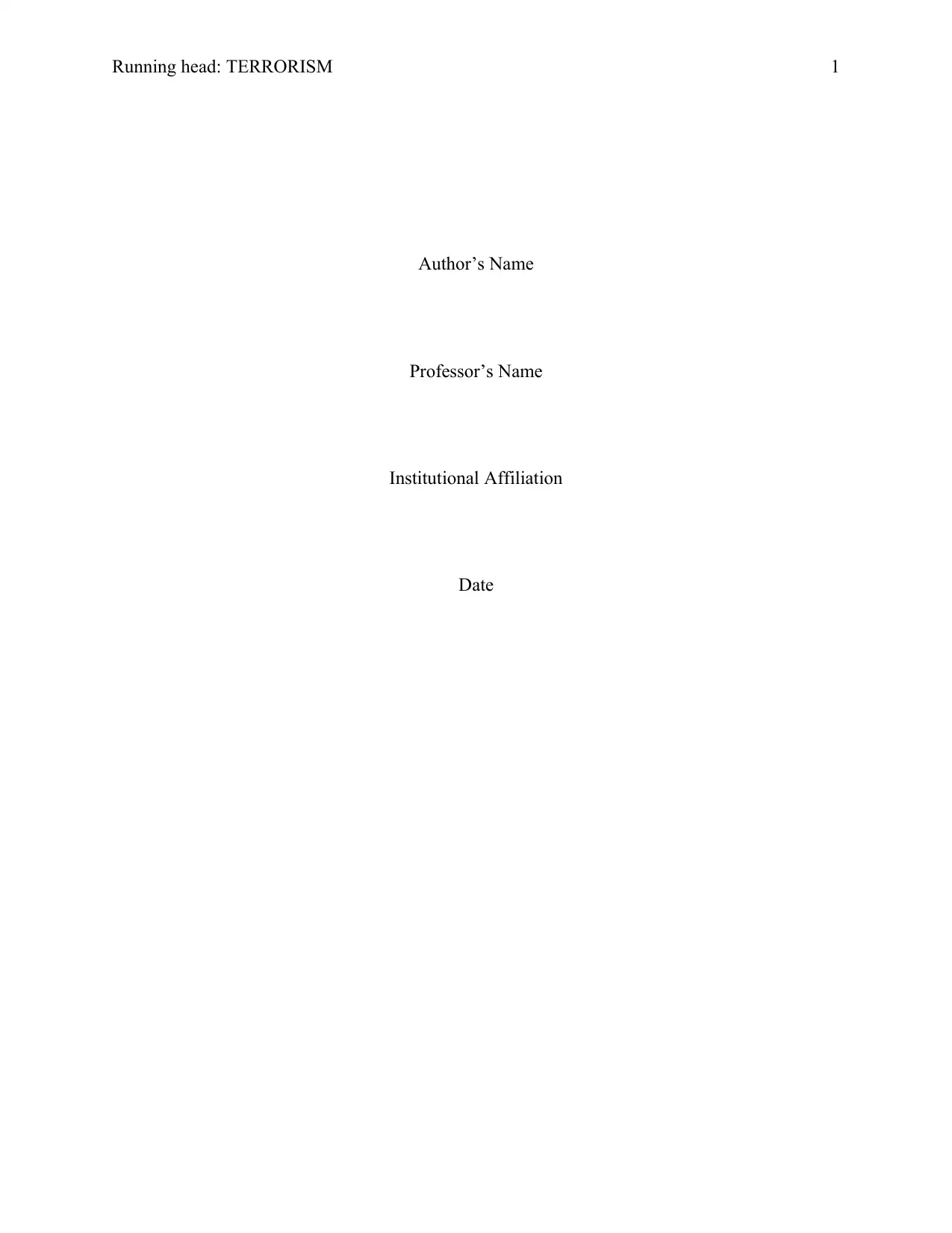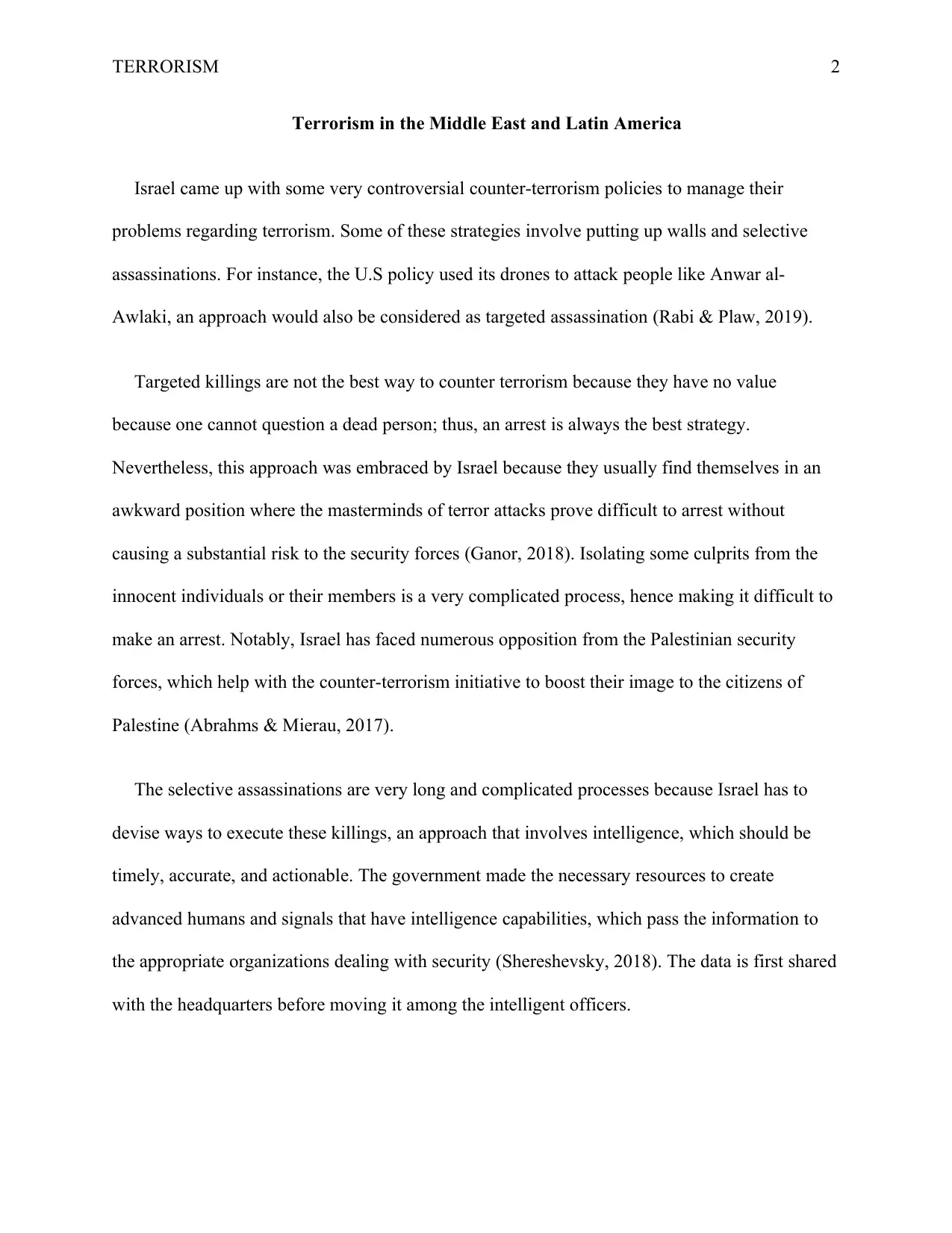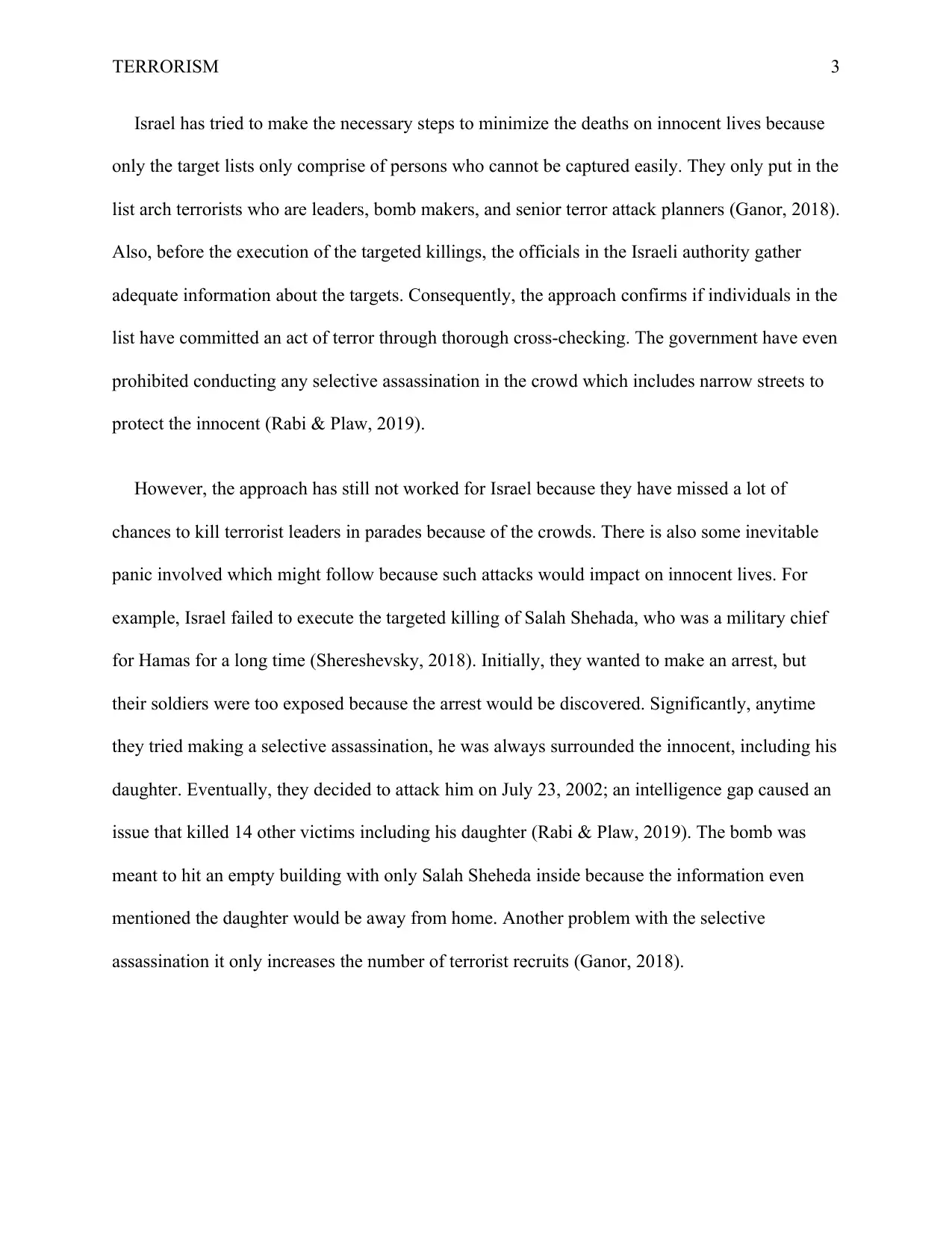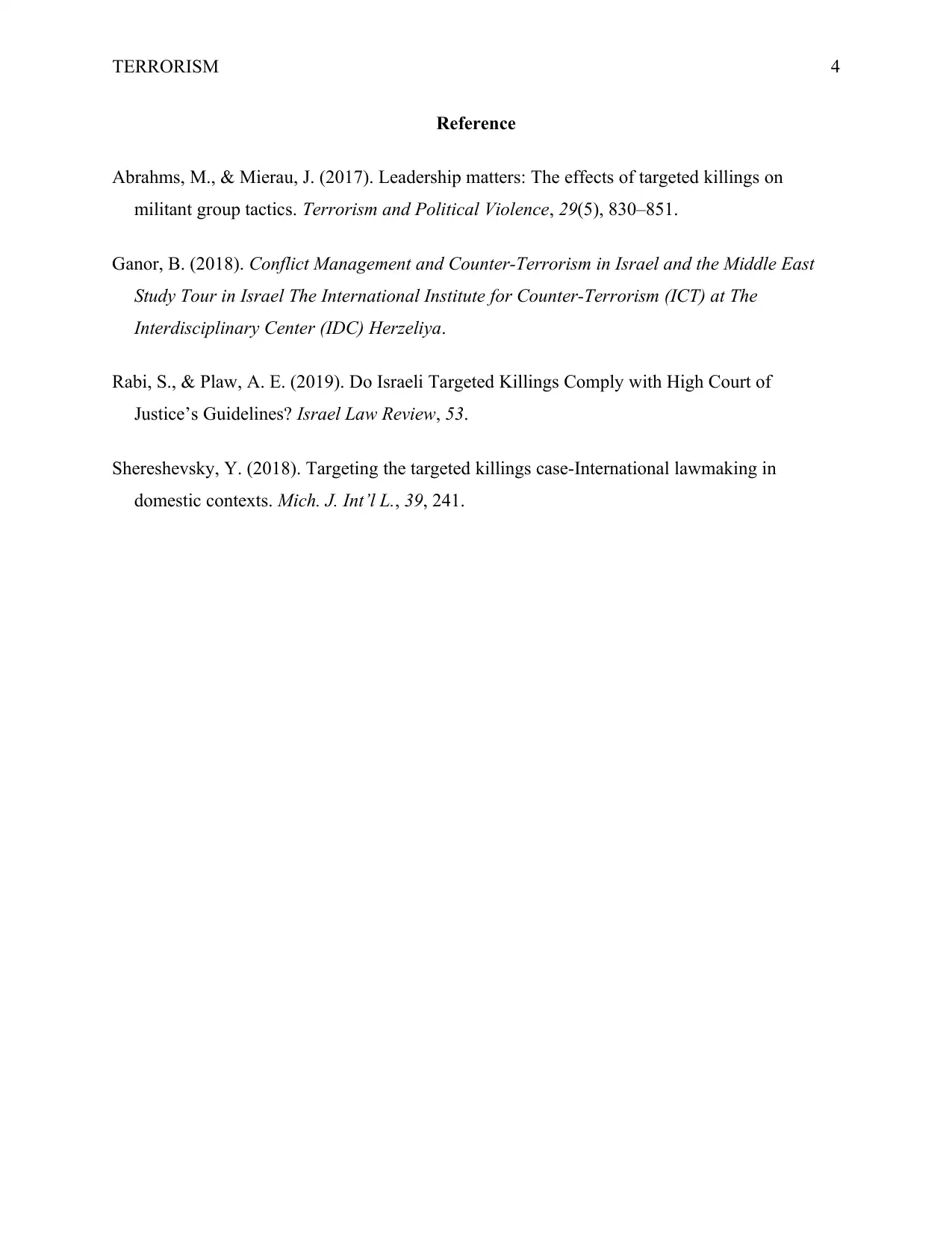Terrorism: Counter-Terrorism Strategies in Middle East, Latin America
VerifiedAdded on 2022/09/26
|4
|782
|23
Essay
AI Summary
This essay delves into the multifaceted issue of terrorism, specifically examining counter-terrorism strategies implemented in the Middle East and Latin America. The analysis focuses on Israel's controversial policies, including targeted killings and selective assassinations, evaluating their effectiveness and ethical implications. The paper explores the complexities of these approaches, considering the challenges of isolating targets, minimizing civilian casualties, and the potential for unintended consequences such as increased recruitment of terrorists. The essay also references specific examples, such as the targeted killing of Salah Shehada, to illustrate the practical difficulties and intelligence gaps associated with these strategies. Ultimately, the essay assesses the overall impact of these counter-terrorism measures, providing a comprehensive overview of the subject matter.
1 out of 4






![[object Object]](/_next/static/media/star-bottom.7253800d.svg)